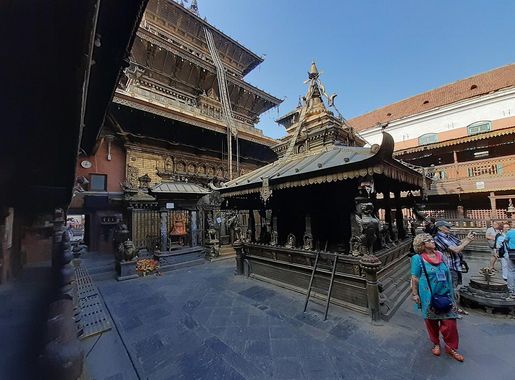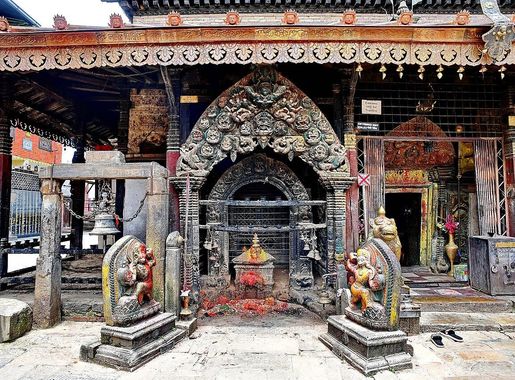
The Serene Splendor of Golden Temple (Kwa Bahal)
Discover Patan's Golden Temple: A harmonious blend of Buddhist and Hindu traditions set in an architectural masterpiece with a rich historical and cultural tapestry.
Nestled in the heart of Patan, Nepal, the Golden Temple, or Kwa Bahal, is a splendid gem that exudes spiritual serenity and historical grandeur. This ancient Buddhist monastery, dating back to the 12th century, is an architectural marvel adorned with intricate wood and metal carvings that captivate visitors at first glance. The temple's golden facade gleams under the sun, creating a magnetic allure that beckons tourists from around the world. As you step into the temple complex, the rich cultural tapestry of Nepal unfolds before you. The central courtyard, surrounded by stunning Newari-style architecture, is a sanctuary of peace and contemplation. Here, you can observe monks going about their daily rituals, adding a living dimension to the historical space. The main shrine houses a striking statue of Sakyamuni Buddha, while various smaller shrines and prayer wheels scattered around the complex offer multiple points of interest. One of the unique aspects of visiting the Golden Temple is the blend of religious practices you will encounter. Although it is a Buddhist site, Hindu deities also find a place here, reflecting the harmonious coexistence of different faiths in Nepal. The temple is not just a monument but a living, breathing center of spirituality, where the past and present coexist seamlessly. A visit to the Golden Temple is incomplete without exploring the surrounding neighborhood. The narrow lanes of Patan are filled with artisanal shops, local eateries, and vibrant markets. Each corner reveals a new facet of local life, from craftsmen at work to children playing in ancient courtyards. The area around the temple offers a perfect blend of cultural immersion and leisurely exploration, making it an unforgettable part of your travel experience.
Local tips in Golden Temple (Kwa Bahal)
- Visit early in the morning to experience the peaceful morning rituals of the monks.
- Wear modest clothing as a sign of respect when entering the temple premises.
- Take time to explore the surrounding artisanal shops for unique local crafts.
- Hire a local guide to gain deeper insights into the temple’s history and cultural significance.
The Serene Splendor of Golden Temple (Kwa Bahal)
Nestled in the heart of Patan, Nepal, the Golden Temple, or Kwa Bahal, is a splendid gem that exudes spiritual serenity and historical grandeur. This ancient Buddhist monastery, dating back to the 12th century, is an architectural marvel adorned with intricate wood and metal carvings that captivate visitors at first glance. The temple's golden facade gleams under the sun, creating a magnetic allure that beckons tourists from around the world. As you step into the temple complex, the rich cultural tapestry of Nepal unfolds before you. The central courtyard, surrounded by stunning Newari-style architecture, is a sanctuary of peace and contemplation. Here, you can observe monks going about their daily rituals, adding a living dimension to the historical space. The main shrine houses a striking statue of Sakyamuni Buddha, while various smaller shrines and prayer wheels scattered around the complex offer multiple points of interest. One of the unique aspects of visiting the Golden Temple is the blend of religious practices you will encounter. Although it is a Buddhist site, Hindu deities also find a place here, reflecting the harmonious coexistence of different faiths in Nepal. The temple is not just a monument but a living, breathing center of spirituality, where the past and present coexist seamlessly. A visit to the Golden Temple is incomplete without exploring the surrounding neighborhood. The narrow lanes of Patan are filled with artisanal shops, local eateries, and vibrant markets. Each corner reveals a new facet of local life, from craftsmen at work to children playing in ancient courtyards. The area around the temple offers a perfect blend of cultural immersion and leisurely exploration, making it an unforgettable part of your travel experience.
Iconic landmarks you can’t miss
Hiranya Varna Mahavihar
Explore the tranquil beauty of Hiranya Varna Mahavihar, a stunning Buddhist temple in Lalitpur, known for its intricate architecture and rich cultural heritage.
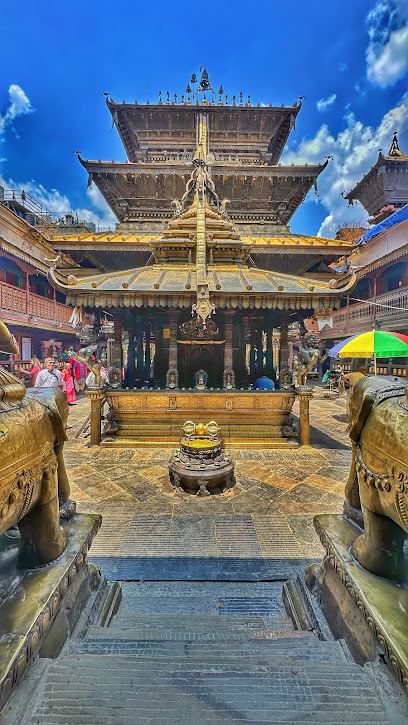
Oku Bahal Rudra Varna Mahavihar
Discover Oku Bahal Rudra Varna Mahavihar, a serene Buddhist temple in Lalitpur, showcasing stunning architecture and rich cultural heritage.
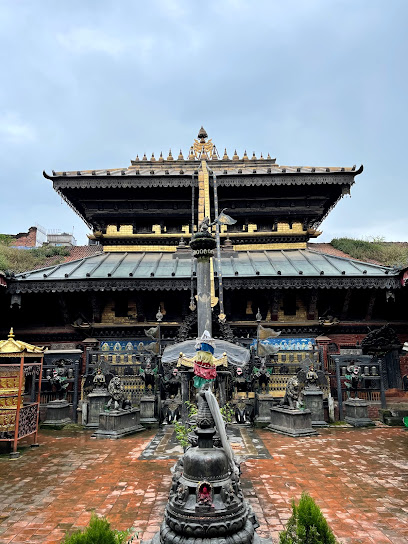
Gabahal
Experience the serene beauty and rich spiritual heritage of Gabahal, a tranquil Buddhist temple in the heart of Lalitpur.
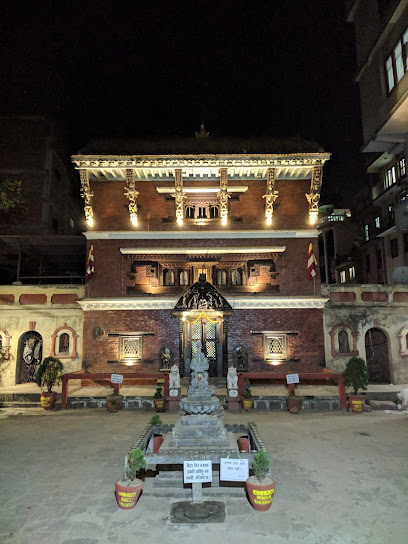
BhinchheBahal भिन्छेबहाल
Discover the peaceful embrace of BhinchheBahal, a historic Buddhist temple in Lalitpur, where tradition and tranquility meet in the heart of Nepal.
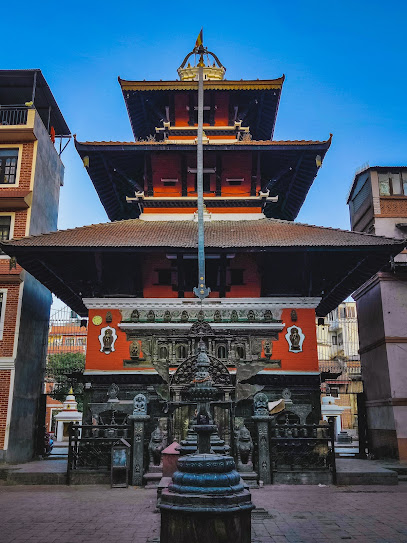
Golden temple gate
Explore the Golden Temple Gate in Lalitpur, a stunning religious destination showcasing intricate architecture and rich cultural heritage.
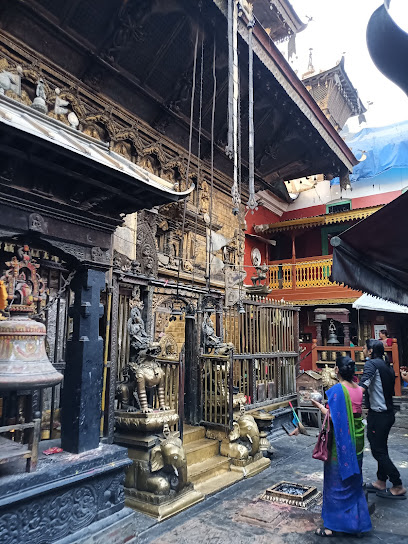
Golden Temple Art Gallery
Explore the Golden Temple Art Gallery: A vibrant showcase of Nepalese artistry, nestled near the historic Golden Temple in Lalitpur.
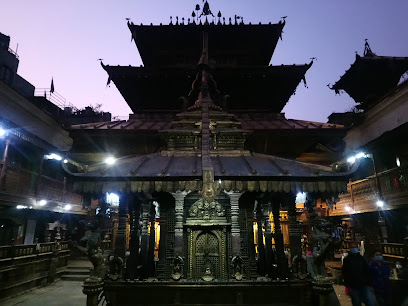
Golden Temple Guest House
Experience the warmth of local hospitality at Golden Temple Guest House, your cozy retreat in the heart of Lalitpur's vibrant cultural scene.
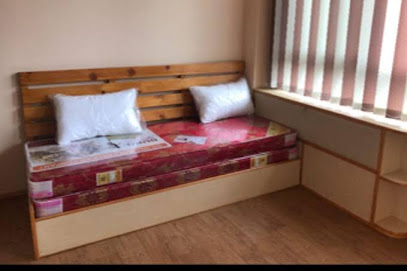
Bajra Kriti Mahavihar, Wan Bahal
Explore the serene Bajra Kriti Mahavihar, a stunning Buddhist temple in Lalitpur, showcasing rich heritage and exquisite architecture.
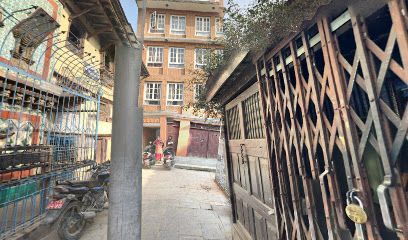
Kwalkhu Near golden temple
Discover Kwalkhu, a vibrant handicraft market near the Golden Temple in Lalitpur, where tradition meets artistry in every handmade piece.

Gusthala Mahavihara (GoI-INTACH Restored site)
Discover tranquility at Gusthala Mahavihara, a beautifully restored Buddhist temple in Lalitpur, Nepal. Explore rich traditions and serene surroundings.

Essential places to dine
Dhokaima Cafe
Experience the perfect fusion of tradition and modernity at Dhokaima Cafe in Lalitpur – where every meal tells a story.
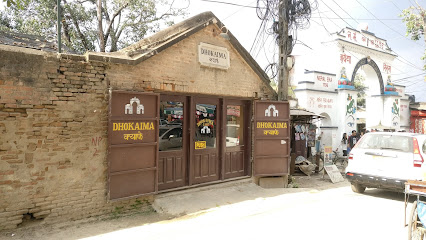
The Workshop Eatery
Experience the rich flavors of Lalitpur at The Workshop Eatery - where culinary creativity meets cozy ambiance.
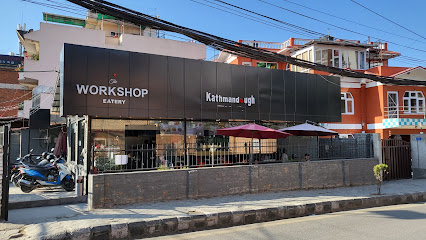
Tasneem's Kings Kitchen
Experience authentic Indian Muslim cuisine at Tasneem's Kings Kitchen in Lalitpur – where every dish tells a flavorful story.
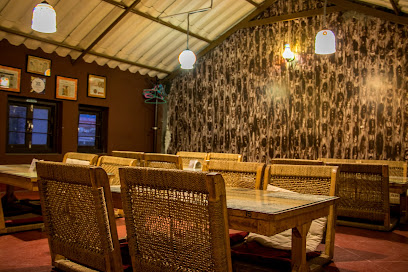
Queens Eatery
Experience the best of fast food at Queens Eatery in Lalitpur—where flavors meet convenience!
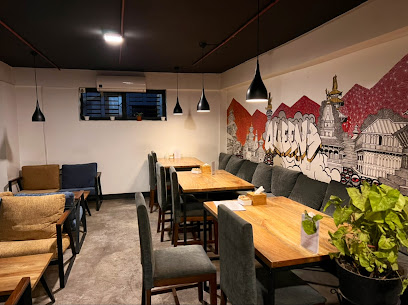
Nepalaya Rooftop Restaurant
Experience authentic Nepalese cuisine with breathtaking views at Nepalaya Rooftop Restaurant in Kathmandu's vibrant Thamel district.

Honacha
Discover authentic Asian cuisine at Honacha in Lalitpur—a delightful blend of tradition and flavor awaits every visitor.
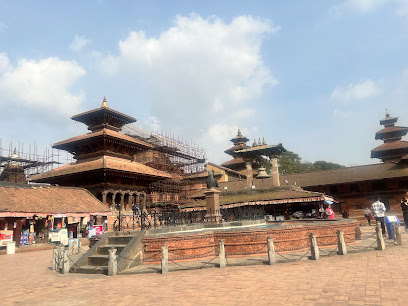
The Yellow House
Discover culinary delights at The Yellow House in Lalitpur - where local flavors meet global inspiration.
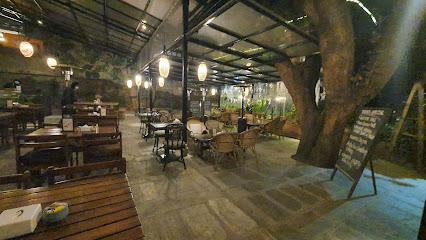
Newari Kitchen
Discover authentic Nepali cuisine at Newari Kitchen in Kathmandu – a culinary journey through tradition and flavor.
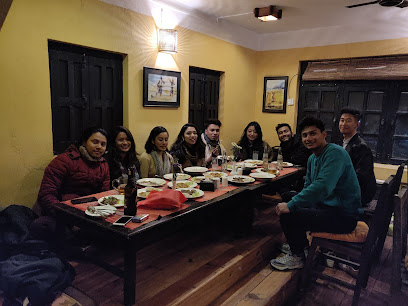
Cafe Du Temple Lalitpur
Discover Cafe Du Temple in Lalitpur: A perfect blend of cozy ambiance and diverse cuisine awaits you!
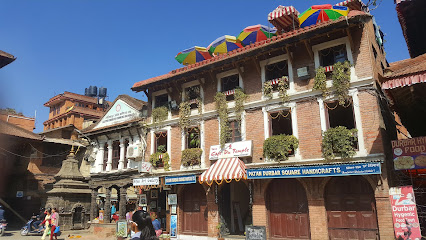
Baked n' Fresh
Discover the charm of Baked n' Fresh in Lalitpur – where every bite is a taste of homemade goodness.

Markets, malls and hidden boutiques
B and N collection (लुगा पसल)
Discover the rich textile heritage of Nepal at B and N Collection, your go-to clothing store for traditional and modern attire in Lalitpur.
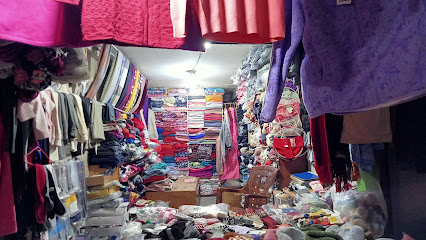
MAHAPAL GIFT SHOP
Discover authentic Nepalese souvenirs at Mahapal Gift Shop in Lalitpur, where local artistry and culture come alive in unique handmade treasures.

Classic Tibetan Thanka Store
Discover the rich heritage of Tibetan artistry at the Classic Tibetan Thanka Store in Lalitpur, home to exquisite Thanka paintings and artifacts.
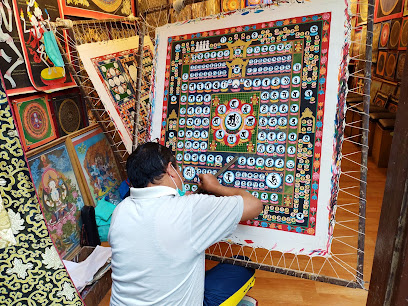
Gautam Gift Emporium
Explore unique handicrafts and gifts at Gautam Gift Emporium, a vibrant shop and museum near Lalitpur's Golden Temple.
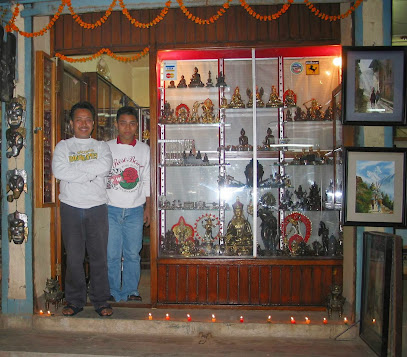
WOLLEN GOODS
Discover authentic woolen apparel and traditional textiles at Wollen Goods, a charming clothing store in Lalitpur, Nepal.

Evaan Store
Explore Evaan Store in Lalitpur for unique gifts and authentic Nepalese handicrafts that capture the spirit of your travels.

Prerna Handicrafts, Bhulku
Explore the exquisite craftsmanship of Nepal at Prerna Handicrafts in Lalitpur, a must-visit for unique artisan souvenirs and cultural treasures.

golden temple road
Explore Golden Temple Road in Lalitpur: a vibrant blend of culture, shopping, and authentic Nepalese cuisine amidst stunning architecture.

UNIQUE FASHION
Explore UNIQUE FASHION in Lalitpur for vibrant accessories that blend traditional craftsmanship with contemporary style.

SHAKYA'S UNIQUE EMPORIUMxyz
Explore Shakya's Unique Emporium in Lalitpur for authentic Nepalese crafts, unique souvenirs, and a vibrant shopping experience that reflects local artistry.
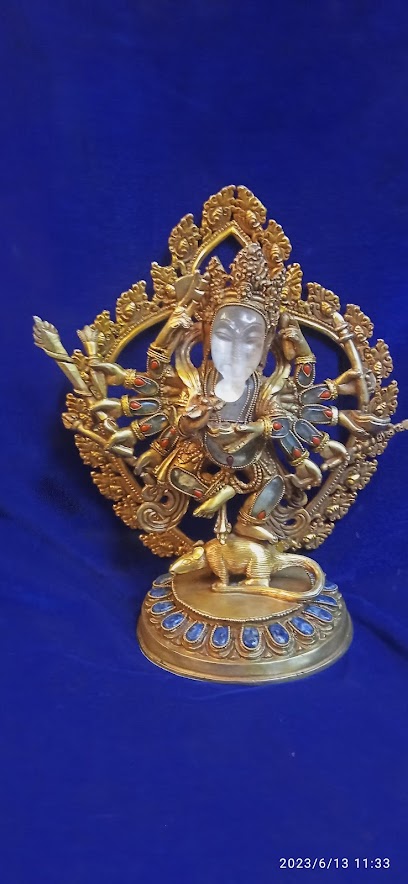
Local Phrases
-
- Helloनमस्ते
[namaste] - Goodbyeछिक्को बिदा
[chikko bida] - Yesहो
[ho] - Noहोइन
[hoin] - Please/You're welcomeकृपया/स्वागत छ
[kripya/swagat cha] - Thank youधन्यवाद
[dhanyabad] - Excuse me/Sorryमाफ गर्नुहोस्
[maaf garnuhos] - How are you?तपाईंलाई कस्तो छ?
[tapailai kasto cha?] - Fine. And you?राम्रो छ। तपाईंलाई?
[ramro cha. tapailai?] - Do you speak English?तिमी अंग्रेजी बोल्छौ?
[timi angreji bolchhau?] - I don't understandम बुझ्न सक्दिन
[ma bujhn sakdin]
- Helloनमस्ते
-
- I'd like to see the menu, pleaseकृपया मेनु हेर्न चाहन्छु
[kripya menu hern chahanchu] - I don't eat meatम मासु खाँदिन
[ma masu khandin] - Cheers!चियर्स!
[chears!] - I would like to pay, pleaseकृपया भुक्तानी गर्न चाहन्छु
[kripya bhuktani garn chahanchu]
- I'd like to see the menu, pleaseकृपया मेनु हेर्न चाहन्छु
-
- Help!मदत गर्नुहोस्!
[madat garnuhos!] - Go away!धुँवा लाग्नुहोस्!
[dhunva lagnuhos!] - Call the Police!पुलिसलाई बोलाउनुहोस्!
[polis lai bulaunuhos!] - Call a doctor!डाक्टरलाई बोलाउनुहोस्!
[daktar lai bulaunuhos!] - I'm lostम गुमिएको छु
[ma gumiye ko chu] - I'm illम बिरामी छु
[ma birami chu]
- Help!मदत गर्नुहोस्!
-
- I'd like to buy...म खरीद गर्न चाहन्छु...
[ma kharid garn chahanchu...] - I'm just lookingम सिर्जना गरिरहेको छु
[ma sirjana gari raheko chu] - How much is it?यो कति हो?
[yo kati ho?] - That's too expensiveत्यो धेरै महँगो छ
[tyo dherai mahango cha] - Can you lower the price?मात्रै मूल्य कम गर्न सक्नुहुन्छ?
[matrai mulya kam garn saknuhunchha?]
- I'd like to buy...म खरीद गर्न चाहन्छु...
-
- What time is it?अहिलेको समय कति बज्यो?
[ahileko samay kati bajyo?] - It's one o'clockएक बजे भएको छ
[ek baje bhaeko cha] - Half past (10)(१०) को आधा बजे
[(10) ko aadha baje] - Morningबिहान
[bihan] - Afternoonदिउँसो
[diunso] - Eveningसाँझ
[sanh] - Yesterdayहिजो
[hijo] - Todayआज
[aaj] - Tomorrowभोलि
[bholi] - 1एक
[ek] - 2दुई
[dui] - 3तीन
[tin] - 4चार
[chaar] - 5पाँच
[paanch] - 6छ
[chha] - 7सात
[saat] - 8आठ
[aath] - 9नौ
[nau] - 10दश
[dash]
- What time is it?अहिलेको समय कति बज्यो?
-
- Where's a/the...?... कहाँ छ?
[... kahan cha?] - What's the address?ठेगाना के हो?
[thegana ke ho?] - Can you show me (on the map)?(नक्सा मा) देखाउन सक्नुहुन्छ?
[(naksaa ma) dekhaun saknuhunchha?] - When's the next (bus)?अर्को (बस) कहाँ जान्छ?
[arko (bas) kahan jancha?] - A ticket (to ....)(.... सम्म) एक टिकट
[(.... samma) ek ticket]
- Where's a/the...?... कहाँ छ?
History of Golden Temple (Kwa Bahal)
-
The Golden Temple, known as Kwa Bahal, was founded in the 12th century by King Jayasthiti Malla. This period marked a significant development of Buddhist architecture and culture in Patan, with the temple serving as a prominent monastery dedicated to the Newar community. The intricate wood carvings and elaborate stonework reflect the artistry of the time, showcasing the fusion of Hindu and Buddhist influences that characterize much of Nepal's history.
-
Patan's Golden Temple is a testament to the Newar community's rich cultural heritage. The Newars have played a pivotal role in the preservation and continuation of Buddhist traditions in the region. The temple complex is not only a place of worship but also a hub of social and cultural activity, where festivals like Biska Jatra and Buddha Jayanti are celebrated with great fervor, demonstrating the community's deep-rooted spiritual practices.
-
The Golden Temple is renowned for its stunning architecture, which combines elements of both Hindu and Buddhist styles. The three-story structure is adorned with intricate carvings, particularly of the deity Avalokiteshvara, who is central to the worship practices at the temple. The use of gold in the temple's decorations and the unique blend of materials exemplify the high level of craftsmanship achieved by artisans in Patan during the medieval period.
-
In the late 20th century, particularly after the devastating 2015 earthquake, significant restoration efforts were undertaken to preserve the Golden Temple's structural integrity and artistic value. These efforts highlight the temple's importance not just as a religious site but as a cultural landmark, reflecting the resilience of the Patan community in safeguarding their heritage against natural disasters and modern challenges.
-
Today, Kwa Bahal stands as a symbol of Patan's rich cultural tapestry. It attracts both pilgrims and tourists, serving as a site for meditation and reflection amidst the bustling urban environment. The temple continues to host rituals and ceremonies, ensuring that the traditions of the Newar people remain vibrant and connected to the past while also engaging with a global audience.
Golden Temple (Kwa Bahal) Essentials
-
Golden Temple (Kwa Bahal) is located in the heart of Patan, making it easily accessible from other neighborhoods. From the Patan Durbar Square, it is a short 10-minute walk. You can also take a taxi or a local rickshaw, which are readily available. If you're coming from Kathmandu, take a microbus or taxi to Lagankhel, then catch a local rickshaw to the temple.
-
Golden Temple is best explored on foot due to its compact size and pedestrian-friendly streets. Local rickshaws are available for longer distances within Patan. Bicycles can also be rented from nearby shops, but be cautious of traffic. Public buses do not typically operate in this area, as it is more suited for local transport options.
-
Patan is generally safe for tourists, but as with any city, standard precautions are advisable. Avoid walking alone late at night, especially in less crowded areas. While there are no specific high-crime zones in Golden Temple, petty thefts can occur in crowded places. Always keep your belongings secure and be aware of your surroundings.
-
In case of an emergency, dial 100 for police assistance or 101 for fire services. For medical emergencies, the nearest hospital is Patan Hospital, located a short distance away. It's advisable to have travel insurance that covers medical emergencies. Pharmacies are available throughout Patan for minor health concerns.
-
Fashion: Do dress modestly, especially when visiting the temple; avoid shorts and sleeveless tops. Religion: Do respect religious practices; silence your phone and avoid taking photos where prohibited. Public Transport: Do be courteous to locals; don't engage in loud conversations. Greetings: Do greet locals with 'Namaste' and a slight bow; don’t rush through interactions. Eating & Drinking: Do try local street food; don’t eat in public areas near the temple as it’s considered disrespectful.
-
To experience Golden Temple like a local, visit during the morning when the temple is less crowded and the morning prayers are taking place. Explore the side streets for local artisan shops and cafes, where you can enjoy traditional Newari food. Engage with local residents, who are often happy to share stories about the temple's history. Make sure to try the local specialty, 'Yomari,' a sweet dumpling, from nearby vendors.
Trending Landmarks in Golden Temple (Kwa Bahal)
Nearby Cities to Golden Temple (Kwa Bahal)
-
Things To Do in Kathmandu
-
Things To Do in Bhaktapur
-
Things To Do in Nagarkot
-
Things To Do in Gorkha
-
Things To Do in Bandipur
-
Things To Do in Chitwan
-
Things To Do in Namche Bazaar
-
Things To Do in Pokhara
-
Things To Do in Patna
-
Things To Do in Lumbini
-
Things To Do in Darjeeling
-
Things To Do in Siliguri
-
Things To Do in Gangtok
-
Things To Do in Varanasi
-
Things To Do in Paro


